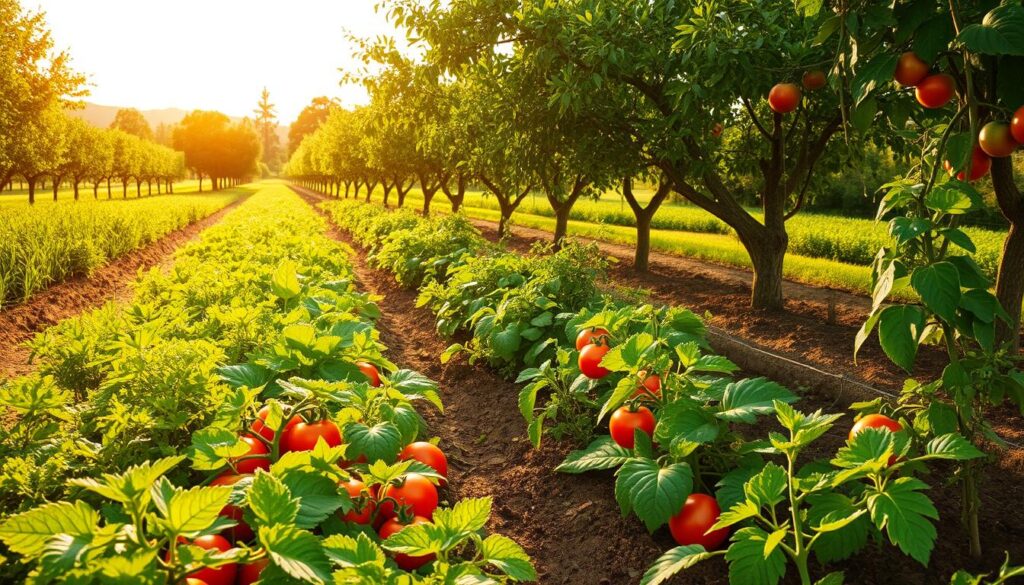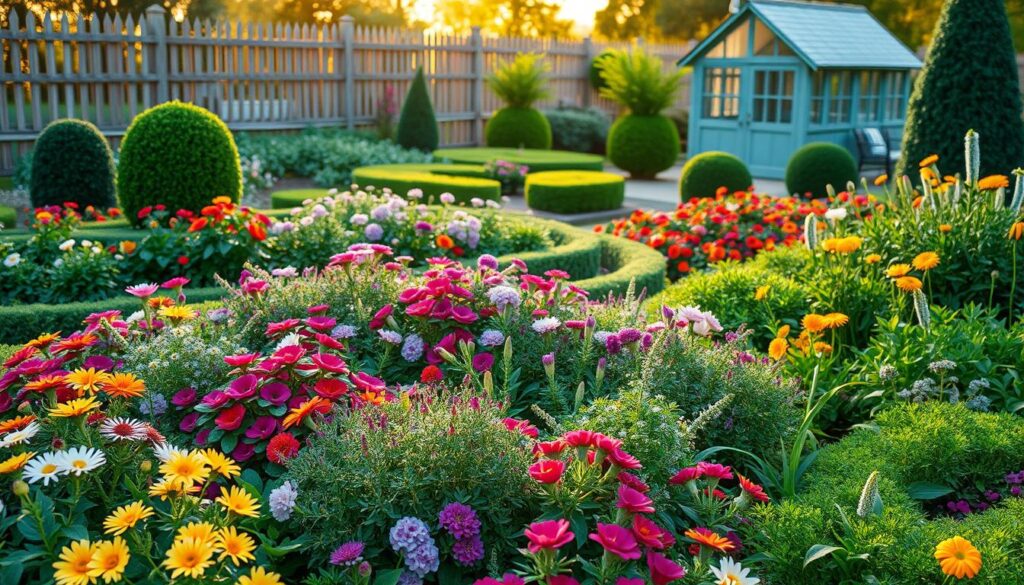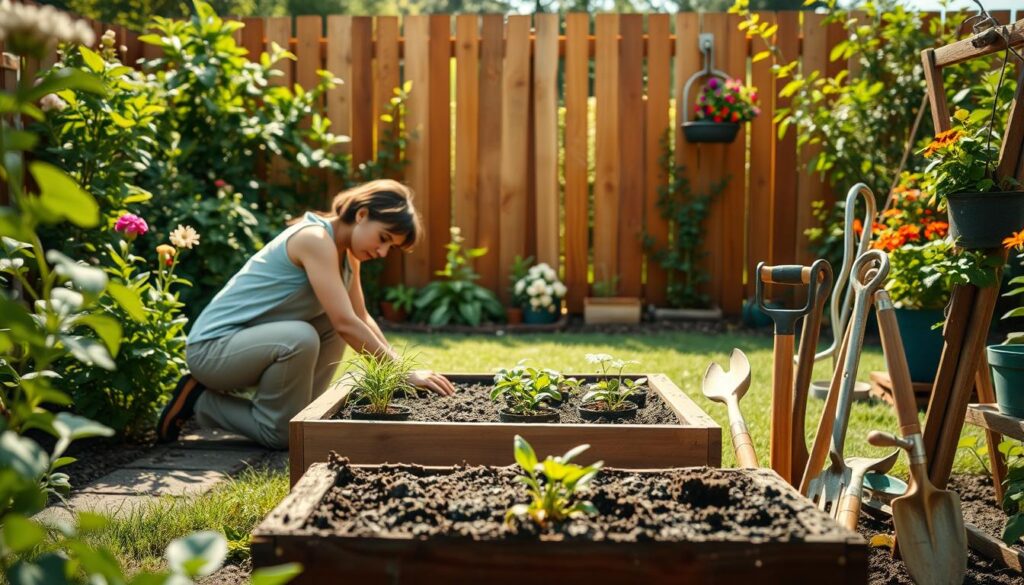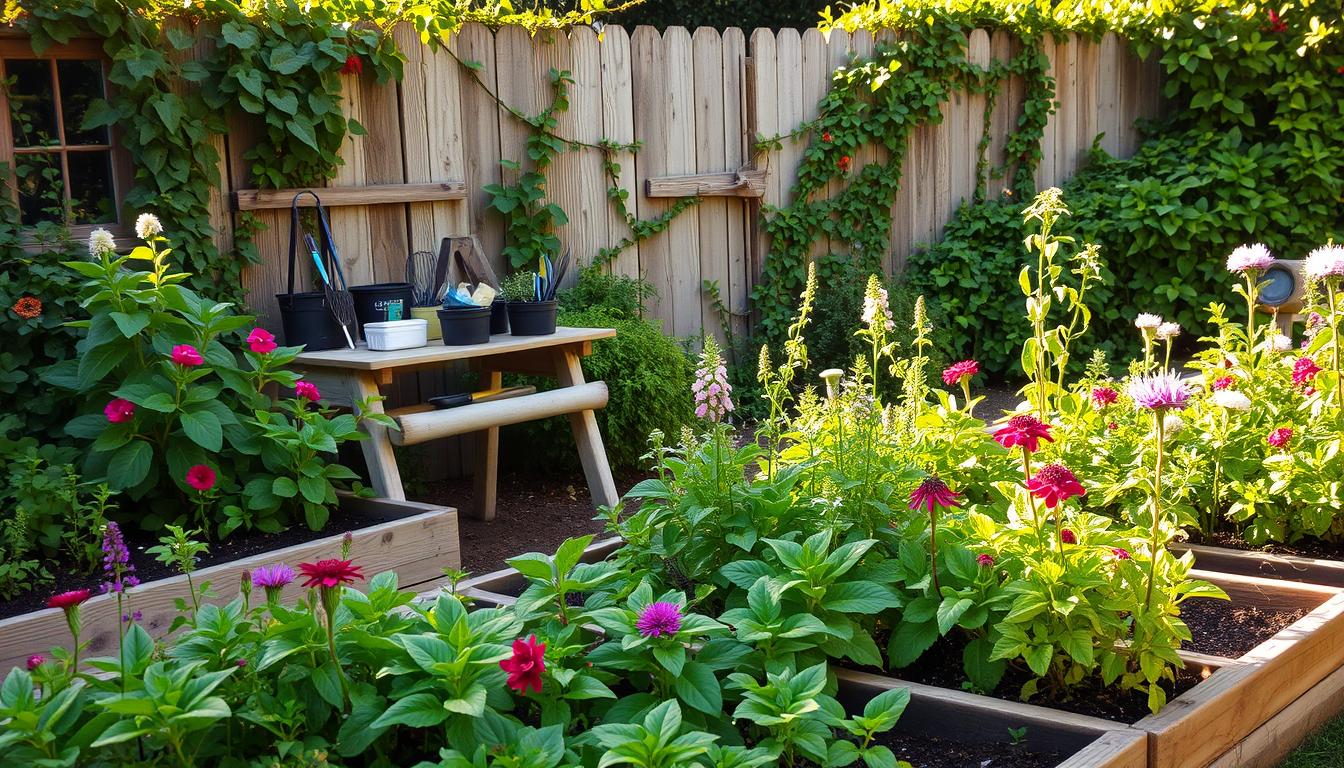Winter is the perfect time to gather your family and start dreaming about your next garden project. Whether you’re a beginner or an experienced gardener, using a template can make the process smoother and more enjoyable. Templates help you organize your ideas, ensuring every plant has its place.

To get started, consider downloading free templates that offer structured layouts and creative designs. Annette’s 9-page printables are a great resource for tracking seedlings, harvests, and other details throughout the year. These tools are especially helpful for staying organized during the busy growing season.
Remember, it’s best to start small. Focus on a manageable area or a few plants to avoid feeling overwhelmed. This approach ensures your garden remains a source of joy rather than stress.
Key Takeaways
- Winter is an ideal time to plan your garden with family.
- Templates simplify the process for all skill levels.
- Free downloadable resources are available for structured layouts.
- Annette’s printables help track seedlings and harvests.
- Starting small prevents overwhelm and ensures success.
Why Use a Garden Planning Template?
Using a structured approach can transform your gardening experience. Templates provide visual layouts that reduce guesswork, making it easier to organize your outdoor space effectively. Whether you’re rotating crops or pairing companion plants, these tools ensure every plant thrives.
Lori’s 5-year tested spreadsheet is a game-changer. It tracks germination dates, harvest times, and zone-specific frost dates. This detailed system helps you stay on top of your schedule, saving time and effort.

Overplanting is a common issue, but templates like Portland Nursery’s Veggie Calendar can help. Designed for succession planting, it ensures you make the most of your space and time. This method is perfect for maximizing yields in raised beds or smaller areas.
Annette’s success with structured layouts is inspiring. Her salsa garden, featuring tomatoes, peppers, and herbs, flourished thanks to a clear plan. This approach works for both beginners and experienced gardeners.
For those with limited space, community gardening is a great option. Shared plots allow you to grow your favorite plants while connecting with others. Templates make it easy to coordinate and manage these spaces effectively.
| Template | Key Features | Best For |
|---|---|---|
| Lori’s Spreadsheet | Track germination, harvest, and frost dates | Detailed record-keeping |
| Portland Nursery’s Veggie Calendar | Succession planting guide | Maximizing space |
| Annette’s Layouts | Structured bed designs | Themed gardens (e.g., salsa gardens) |
Getting Started with Your Garden Plan
The secret to success lies in keeping things simple and intentional. Starting with a manageable area ensures you can focus on quality rather than quantity. This approach helps you avoid feeling overwhelmed and sets the stage for a thriving outdoor space.
Start Small: The Key to Success
Begin with a single 4×8 ft bed or a 10×10 ft plot. This size is ideal for beginners and allows you to experiment without overcommitting. Experts like Lori and Annette recommend this method to ensure you can manage your space effectively.
Limiting your focus to a few plants also helps. Aim for 5-10 types per season, as suggested by Three Acre Farm. This strategy ensures you can give each plant the attention it needs.
Choosing the Right Plants
Select plants your family loves, such as Bullnose peppers or Brandywine tomatoes. These varieties are not only delicious but also relatively easy grow options for beginners.
Source seeds from trusted suppliers like Baker Creek Heirloom Seeds or local nurseries. This ensures you get high-quality seeds that are well-suited to your region.
For inspiration, check out Annette’s pre-planned bed examples. These layouts include clickable links to specific plant varieties, making it simple to get started.
- Begin with a 4×8 ft bed or 10×10 ft plot.
- Prioritize plants your family enjoys.
- Source seeds from reputable suppliers.
- Use pre-planned layouts for guidance.
- Limit to 5-10 plant types per season.
Understanding Ideal Growing Conditions
To grow healthy plants, you need to focus on three key factors: zone, soil, and sun. These elements determine how well your plants will thrive and produce. By understanding your local conditions, you can create an environment where your plants flourish.

Know Your Hardiness Zone
The USDA hardiness zone system helps you identify which plants are best suited for your area. For example, Portland falls into zone 8b, while Bend has a shorter 90-day growing season. Knowing your zone ensures you choose plants that can survive your climate.
Annette’s blog offers organic soil recipes and pest control guides tailored to specific zones. These resources make it easier to prepare your outdoor space for planting.
Soil Quality and Sun Exposure
Healthy soil is the foundation of a thriving outdoor area. Test your soil to determine its type—whether it’s heavy clay or sandy. Amendments like compost can improve its quality.
Most vegetables and cut flowers, such as zinnias and cosmos, need at least 8 hours of direct sun daily. If your space lacks sunlight, consider raised beds or containers to optimize growing conditions.
Three Acre Farm’s raised bed method is perfect for areas with poor soil. This approach allows you to control the growing environment and maximize yields.
| Factor | Key Tips |
|---|---|
| Hardiness Zone | Check USDA zone map for plant compatibility. |
| Soil Quality | Test soil and add compost for better nutrients. |
| Sun Exposure | Ensure 8+ hours of sunlight for vegetables and flowers. |
Exploring Garden Planning Templates
Spring is the perfect season to explore new ideas for your outdoor space. Whether you’re designing a structured bed or a creative layout, templates can simplify the process. These tools help you visualize your space and ensure every detail is covered.

Structured Garden Bed Layout
One popular option is the pre-gridded 8×4 bed. This layout includes precise spacing for tomatoes, peppers, and marigolds. It’s ideal for maximizing space and ensuring healthy growth. Lori’s spreadsheet also offers a tab for mapping bed layouts and succession planting, making it a must-have resource.
Creative Garden Design
For a more artistic approach, consider a watercolor-inspired design. This template is perfect for kids and can be reused through lamination. Annette’s collaboration with Axe and Root Homestead offers printable downloads that are both functional and beautiful. Frame this design as seasonal decor or a family keepsake to cherish for years.
These templates are not just tools—they’re sources of inspiration. Whether you’re a beginner or an experienced gardener, they help you bring your ideas to life. For more creative inspiration, check out boho farmhouse decor ideas to complement your outdoor space.
Step-by-Step Guide to Using a Garden Template
Creating a thriving outdoor area begins with a clear and organized approach. A well-designed plan ensures every plant has its place and grows successfully. Let’s break down the process into simple steps.

Mapping Out Your Garden Space
Start by measuring your available space. Use graph paper or tools like Lori’s spreadsheet to sketch your layout. This helps you visualize where each plant will go and ensures efficient use of your area.
For smaller areas, consider tight planting techniques. For example, spacing sunflowers closer together encourages longer stems, perfect for cut flowers. This method maximizes your space while maintaining healthy growth.
Plant Spacing and Layout
Refer to seed packet instructions for spacing guidelines. These provide a solid foundation, but don’t be afraid to make creative adjustments. Beginners can use Annette’s 8×4 bed example, which includes precise plant positions labeled A-L.
If you’re working with raised beds, Three Acre Farm’s 3’x12’ layout is a great model. It’s manageable and scalable, making it ideal for smaller spaces. This approach ensures your plants have room to thrive throughout the growing season.
- Measure your area and sketch a layout.
- Optimize tight spacing for cut flowers.
- Use Annette’s 8×4 bed example for precise positioning.
- Follow seed packet instructions or adjust creatively.
- Consider raised bed layouts for smaller areas.
Tips for Beginner Gardeners
Starting your journey into gardening can feel overwhelming, but it doesn’t have to be. With a few simple tips, you can create a thriving outdoor space that brings joy and beauty. Whether you’re planting your first flowers or growing vegetables, these strategies will set you up for success.

Start with Easy-to-Grow Plants
Choosing the right plants is key for any beginner. Opt for varieties that are low-maintenance and forgiving. Some great options include:
- Basil: A versatile herb that grows quickly and thrives in containers.
- Cherry Tomatoes: Perfect for small spaces and beginner-friendly.
- Butter Lettuce: Easy to grow and ideal for salads.
- Marigolds: These colorful flowers are hardy and great for pest control.
For those interested in flowers, Lori’s “Cut Flower Confidence” course is a fantastic resource. It helps narrow down plant choices and provides expert guidance.
Learn from Experience
Every gardener makes mistakes, and that’s okay. Journaling your journey can help you improve over the years. Note things like overwatering or incorrect spacing to avoid repeating them.
Annette from Azure Farm suggests tagging @azurefarm on social media for community support. Sharing your progress and challenges can lead to valuable advice and encouragement.
Three Acre Farm’s story is inspiring. They started with a small 10×10 plot and grew into a commercial operation over 15 years. Their journey shows that patience and persistence pay off.
Conclusion
Bringing your outdoor dreams to life is easier than ever with the right tools. Templates reduce overwhelm and boost success, making your garden journey enjoyable. Download Annette’s free resources or Lori’s detailed spreadsheet to get started.
Share your progress online to connect with others and gain valuable tips. This is your year to grow and create something beautiful. Explore pest control guides, soil recipes, and courses to enhance your skills.
With the right approach, every season can be a success. Start small, stay organized, and enjoy the process. Happy planning—your outdoor space is waiting!

